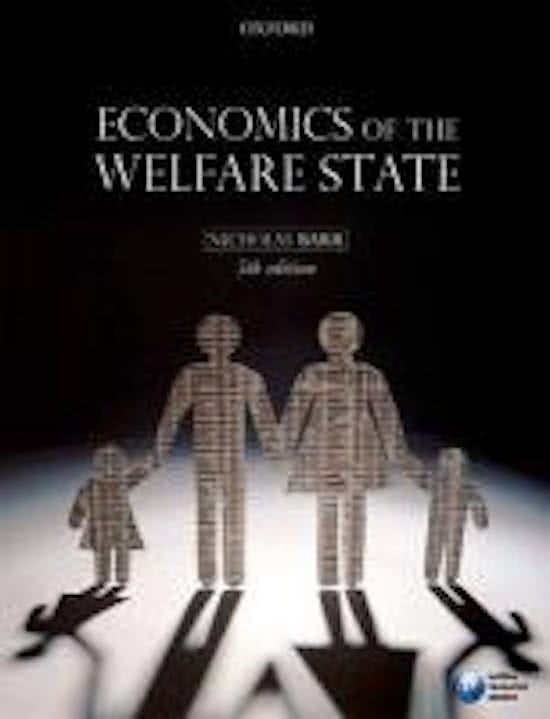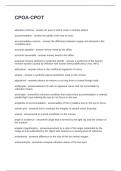What is the welfare state?
The state whereby the state takes responsibility for the welfare of its citizens, in case of
unemployment, illness, old age or poverty.
Exercises should be prepared before the tutorial. You need to make a poster about the article and
you present the poster. Grading is poster/participation (25%) and exam is (75%). People make the
poster in powerpoint and then pdf. You need to submit the poster on BB.
Constrained utility maximization
Utility curves where people have to choose between leisure and consumption. Further the utility
curves goes up the more utility the person gets. Straight line is this the budgetcurve.
Income effect
IE: Describes the impact of increased/decreased purchasing power on consumption
SE: Describes how consumption is affected by changing relative income and prices
Natural logarithm
Take the deriviate of U(x) = ln(x) U’(x) = 1/x)
Why government intervention?
Why do should the government intervene more? Market failures (no perfect competition,
externalities, information asymmetry) and redistribution (changing the allocation of the funds).
I.e. smoking, positive externality (death benefit), negative externality (second hand smoking)
Redistribution
YP = income of the poor people
YR = income of the rich people
F = function
UR = Utility function of the rich.
Conclusion: Government considers the utility function of the poor/rich both the recipients and
contributors.
Types of intervention
Governmental regulation: quality standards – quantity of a public good (schooling) – price (minimum
wage)
1
,Governmental finance: Subsidies & taxes
Trends that apart from ones mentioned above
Globalization – demographic change – changes in family structure (more individualization) –
flexibility of the labour market
Objectives of the welfare state
1. Equity; poverty relief, reducing inequality, social inclusion
2. Efficiency; macro/micro efficiency – consumption smoothing, risk sharing, incentives (the
measure u take has effect on incentives, i.e. incentive to work becomes lower since there are
benefits from the welfare state. Also lower incentive to save, when u get a health
problem/unemployed.
3. Administrative feasibility; the system should be simple and easy to understand. Benefits
should be less open to abuse as possible.
Social welfare
SWF (social welfare function: combines the functions of all individuals).
Rawlsian social welfare function (W = min(U1, U2, … Un). Maximize the utility of the worst-off person
in society
Utilitarian social welfare function (W = U1 + U2 + ..Un). Maximize sum of individual utilities.
Equity
In the example we see the reduction in the inequality after taxes and transfers at one particular
moment. Why are there so many reasons of difference between redistribution. Perhaps on the
political climate.
1. The inequality of pre-tax (amount of income before redistribution, decides how much will be
redistributed)
2. Volatility of income
3. Underestimating or overestimating of people. People think they are lower or higher in the
income distribution and this will decide how they think of the income distribution.
4. Social costs of taxation (deadweight losses)
5. Distrust government
6. Believes of whether poor are lazy/unfortunate
2
, Public mandatory redistribution: Rent subsidies/public pensions
3











